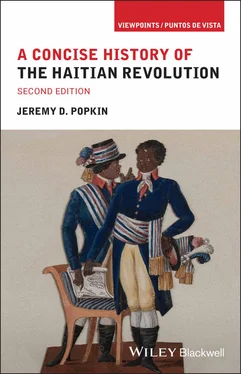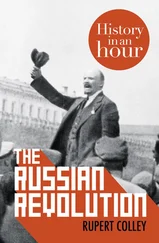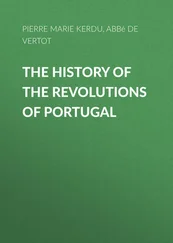By the beginning of 1787, the French government’s attempt to deal with its growing financial problems had started the chain of events that would lead to a full-fledged revolution two years later. Saint-Domingue’s white colonists followed the stages of the pre-revolutionary crisis of 1787 and 1788 closely, and tried to calculate how to turn it to their own advantage. At the same time, they realized that they faced a new danger. In Paris in February 1788, a group of French reformers led by a well-known pamphleteer, Jacques-Pierre Brissot, founded the Society of the Friends of the Blacks. Inspired by the British campaign to abolish the slave trade, the Friends of the Blacks denounced slavery as a violation of natural rights. Its members, who included a number of wealthy aristocrats with properties in the colonies, shared the general European prejudice that blacks were the products of a primitive civilization. The society’s manifestoes called for a gradual phasing out of slavery that, its members claimed, would do no damage to the interests of slaveowners. Despite the moderation of its program, the Society of the Friends of the Blacks clearly underlined the contradiction between the ideals of liberty and equality that the self-proclaimed “patriot” movement in France was demanding and the realities of colonial life. The fact that the French government tolerated the society’s public meetings made the white colonists even more determined to defend their own interests.
Saint-Domingue and the French Revolution
When Louis XVI’s ministers announced, in the summer of 1788, that they were going to summon an elected assembly, the Estates General, to deal with the monarchy’s financial crisis, white landowners in Saint-Domingue immediately began a campaign to obtain seats for themselves. Their spokesmen cast the colonists as victims of an arbitrary government that imposed rules on them without consultation and favored metropolitan merchants over plantation-owners. Recognizing that the enthusiasm for liberty that was sweeping France made an overt defense of slavery risky, they emphasized the economic importance of the colonies and accused the Society of the Friends of the Blacks of promoting impractical utopian ideas. The Friends of the Blacks tried to persuade local electoral assemblies in France to include calls for the reform or abolition of slavery in the cahiers , or lists of grievances that they drew up in the first months of 1789. Few of the cahiers actually mentioned slavery, but those that did clearly identified the institution as a violation of natural rights and Christian values. On 17 June 1789, when the deputies of the Third Estate, the representatives of France’s commoners, took the radical step of challenging the king and the country’s privileged groups, the clergy and the nobility, by proclaiming themselves the National Assembly, the would-be representatives of the white colonists supported them. Some colonists threw themselves into the metropolitan revolutionary movement. Moreau de Saint-Méry, one of the main leaders of protests against the royal administration’s actions in Saint-Domingue, presided over the Paris city council on the afternoon of 14 July 1789, the day the Bastille was stormed. 12
Although many members of the new National Assembly voiced objections to slavery, on 4 July 1789 the deputies voted to give Saint-Domingue six seats, thereby acknowledging the colonies as an integral part of the new national community. By this time, some Saint-Domingue colonists had begun to realize the danger that the new national legislature, in which they were only a small minority, might pass laws that would endanger the institution of slavery, but their protests were ignored by other colonial property-owners who were eager to become deputies. Given that as many as 150 of the 1,200 National Assembly deputies had a direct economic interest in the colonies, it seemed unlikely that that body would do anything to jeopardize the islands’ prosperity. The situation changed after the storming of the Bastille on 14 July 1789, which pushed the French revolutionary movement in a radical direction. Three weeks later, on 4 August 1789, the National Assembly voted to abolish all the special privileges that defined social hierarchy in France. One deputy called for the assembly to consider abolishing slavery as well, although his motion was ignored. On 26 August 1789, however, the assembly passed its famous Declaration of the Rights of Man and Citizen, whose first article proclaimed that “men are born and remain free and equal in rights.” Honoré Mirabeau, one of the most prominent revolutionary spokesmen and a member of the Society of Friends of the Blacks, insisted in his newspaper that the clear meaning of the Declaration was that “there are not, and cannot be, either in France or in any country under French laws, any other men than free men, men equal to one another.” 13The assembly did not listen to Mirabeau, instead deciding that the question of whether the Declaration of Rights applied to the colonies would be settled at a later date. Slaveowners in the colonies understood the danger, however. In Saint-Domingue, the local authorities prohibited the circulation of any newspapers from France because of the subversive ideas they might spread. A short-lived slave uprising in Martinique in August 1789 stoked the white colonists’ fears about the impact of news from France.
While Saint-Domingue’s white colonists tried to exploit the French revolutionary crisis to gain autonomy for themselves without endangering slavery, members of the colony’s free population of color saw the new principles of 1789 as an opportunity to claim political rights for themselves. Already in 1784 a wealthy free man of color, Julien Raimond, had gone to France to lobby on behalf of his group; he had received some encouragement from royal officials who saw his group as more loyal to France than the whites. When whites excluded free men of color from their movement for representation in the Estates General, Raimond and other members of the group in France objected. Initially, the Parisian spokesmen for the free people of color thought they might be able to make an agreement with the whites, who had organized themselves in the Club Massiac to defend their interests. Representatives of the free men of color addressed the group in August 1789, arguing that all of them shared a common interest in protecting slavery. The Club Massiac members rejected these overtures, however, insisting that only the white colonists in Saint-Domingue could make any changes in the colony’s racial system. Raimond and his supporters then turned to the Friends of the Blacks, persuading Brissot and his colleagues that the granting of rights to the free men of color would be a blow against racial prejudice and a first step toward the eventual abolition of slavery. Until 1793, debates about the colonies in France focused on the issue of the rights of the free men of color, rather than on slavery itself. In March 1790, the National Assembly passed two decrees promising that the colonies would be allowed to regulate their own internal affairs and authorizing “citizens” in the colonies to elect assemblies for this purpose. The language of these decrees did not specify whether free men of color were included in the category of citizens, as many French reformers demanded. The white colonists, however, interpreted the laws of March 1790 as giving them the right to decide on the matter, and they excluded the free men of color from the new political assemblies created in Saint-Domingue.
In Saint-Domingue itself, the collapse of royal authority after the storming of the Bastille allowed the white population to realize its dream of governing itself. The royal intendant François Barbé-Marbois, who had closed down the court in Cap Français in 1787, was forced to flee the island in October 1789. Colonists chose new local governments and imitated the revolutionaries in France by creating a National Guard made up of armed white citizens. Uncensored newspapers appeared in the colony’s major cities, and local “patriots” established political clubs like those that had sprung up in France in 1789. In April 1790, an all-white Colonial Assembly convened in the western port city of Saint-Marc, at a safe distance from the royal army garrisons in Port-au-Prince and Le Cap. Although some of its members warned against taking steps that the metropolitan government might interpret as a claim of independence, the majority decided on a confrontational course. On 28 May 1790, they passed a colonial constitution asserting their right to decide on all laws concerning the internal affairs of the colony. When news of the Colonial Assembly’s actions reached France, it provoked an uproar: supporters of the revolution denounced a plot to make Saint-Domingue independent of France, and possibly even to turn it over to France’s main rival, Britain. In the colony, the royal governor, backed by those whites who had opposed the Colonial Assembly’s actions, used force to disperse the deputies. Sailors on the French warship Leopard , stationed in Saint-Marc’s harbor, however, mutinied in support of the assembly; they seized control of the ship and took 85 of the white colonists back to France, where they denounced the governor’s actions. Although the National Assembly sternly rebuked these “Leopardins” for undermining metropolitan authority, they were allowed to stay in France, where they joined the Club Massiac in denouncing the danger of allowing revolutionary principles to spread to the colonies.
Читать дальше












